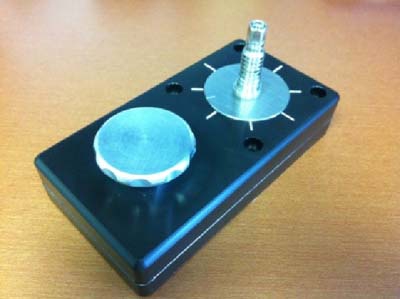
George Products Co. Inc. has announced the addition of a Manual Rotary Stage to their OASIS product line. The OASIS is a full-featured, non-contact vision inspection system that simultaneously measures multiple dimensions on a part to an accuracy +/-0.0001". Working with a shadow (profile view) of the part, measurements are taken at a rate of 10-times per second. Just as fast as a user can place a part into the OASIS, every measurement on that part is instantly compared to dimensional tolerances and reports pass, warn or fail.
With the addition of the Manual Rotary Stage, parts can be rotated a full 360-degrees to get profile images and measurements from every aspect of the part. Of course, all of these measurements are taken in real-time as the part rotates within the Field of View.
The existing OASIS software works with the Manual Rotary Stage and, as with all OASIS measurements, dimensions are displayed in real-time with a traffic light color-coded display panel to easily see the status of all dimensions: Green is Pass, Yellow is outside the warning levels and Red is Fail – beyond the specified tolerance limits. The part can be rotated on the stage and data collected at user-defined increments, allowing the operator to view the measurements and status display panel as they turn the part.
By adding the Manual Rotary Stage to the OASIS, inspectors can insure their parts are within specification limits all the way around. Rotating the part adds the ability to check additional features such as roundness and concentricity, and allows for proper alignment of hex and square features on parts as well as alignment of thru-holes without the need for special fixturing. As always, data is recorded with the built-in OASIS Inspection Report or can be automatically imported into any SPC program.
Contact Details
Related Glossary Terms
- statistical process control ( SPC)
statistical process control ( SPC)
Statistical techniques to measure and analyze the extent to which a process deviates from a set standard.
- tolerance
tolerance
Minimum and maximum amount a workpiece dimension is allowed to vary from a set standard and still be acceptable.







